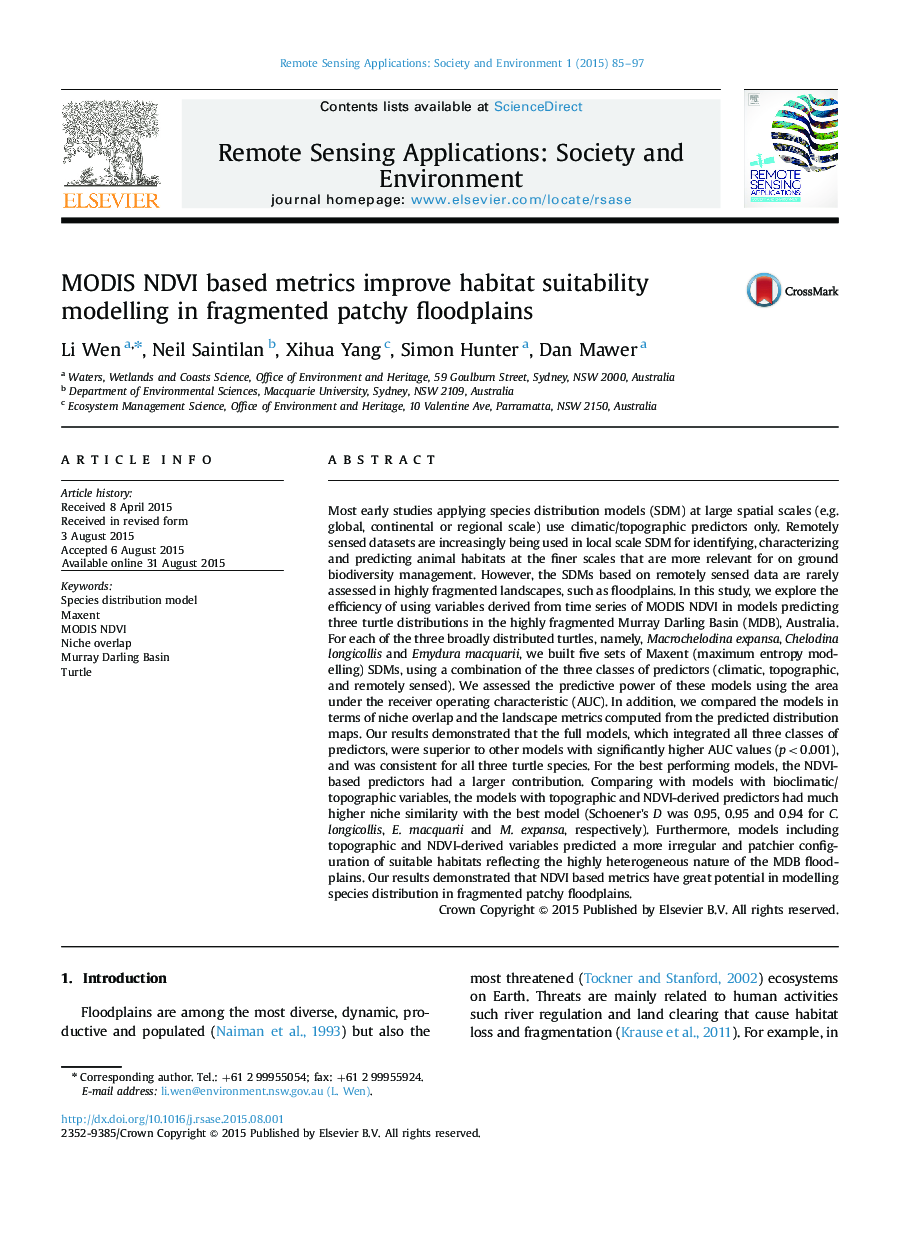| کد مقاله | کد نشریه | سال انتشار | مقاله انگلیسی | نسخه تمام متن |
|---|---|---|---|---|
| 4458785 | 1621006 | 2015 | 13 صفحه PDF | دانلود رایگان |

• We built and evaluated five sets of species distribution models for three freshwater turtles.
• Variables derived from NDVI time series significantly improved model performance.
• Turtle distribution can be adequately modelled by topographic and NDVI-based variables.
Most early studies applying species distribution models (SDM) at large spatial scales (e.g. global, continental or regional scale) use climatic/topographic predictors only. Remotely sensed datasets are increasingly being used in local scale SDM for identifying, characterizing and predicting animal habitats at the finer scales that are more relevant for on ground biodiversity management. However, the SDMs based on remotely sensed data are rarely assessed in highly fragmented landscapes, such as floodplains. In this study, we explore the efficiency of using variables derived from time series of MODIS NDVI in models predicting three turtle distributions in the highly fragmented Murray Darling Basin (MDB), Australia. For each of the three broadly distributed turtles, namely, Macrochelodina expansa, Chelodina longicollis and Emydura macquarii, we built five sets of Maxent (maximum entropy modelling) SDMs, using a combination of the three classes of predictors (climatic, topographic, and remotely sensed). We assessed the predictive power of these models using the area under the receiver operating characteristic (AUC). In addition, we compared the models in terms of niche overlap and the landscape metrics computed from the predicted distribution maps. Our results demonstrated that the full models, which integrated all three classes of predictors, were superior to other models with significantly higher AUC values (p<0.001), and was consistent for all three turtle species. For the best performing models, the NDVI-based predictors had a larger contribution. Comparing with models with bioclimatic/topographic variables, the models with topographic and NDVI-derived predictors had much higher niche similarity with the best model (Schoener's D was 0.95, 0.95 and 0.94 for C. longicollis, E. macquarii and M. expansa, respectively). Furthermore, models including topographic and NDVI-derived variables predicted a more irregular and patchier configuration of suitable habitats reflecting the highly heterogeneous nature of the MDB floodplains. Our results demonstrated that NDVI based metrics have great potential in modelling species distribution in fragmented patchy floodplains.
Journal: Remote Sensing Applications: Society and Environment - Volume 1, July 2015, Pages 85–97